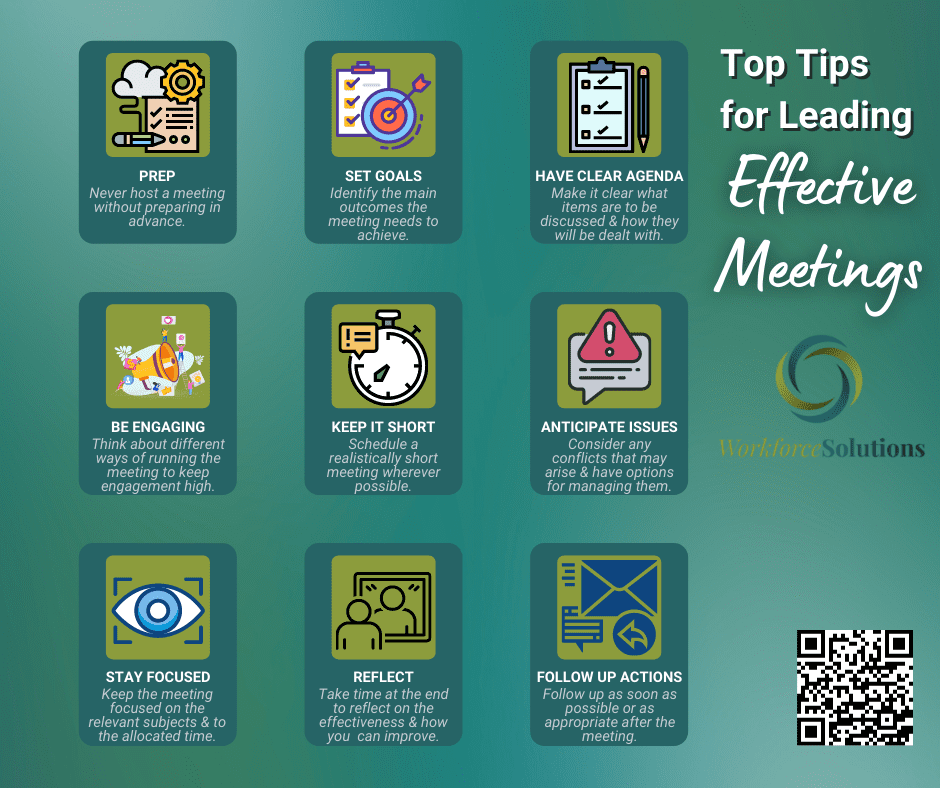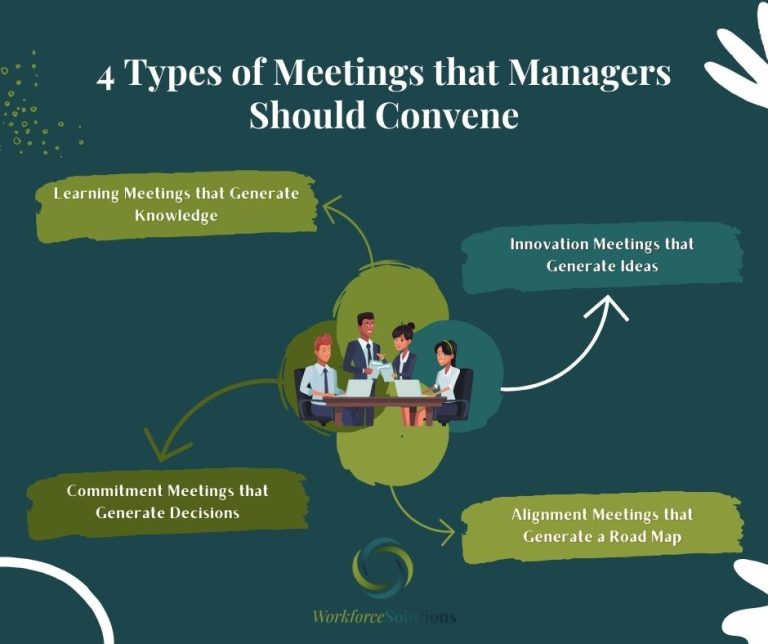Raise your hand if you actually like meetings? Think about some reasons why you may not care for them. Is it because you feel like nothing really gets accomplished? Are people getting off-topic? Is the group unsure of what the meeting is about so they come unprepared? Are these meetings more painful that productive?
These are all things that we want to combat, by leading effective meetings. Whether you’re hosting a business meeting, a board meeting, a parent meeting, apply where it suits you. All of these tips can be used to avoid the cliché dread of said meeting.
We’d like to share our five best tips for leading your meetings from a painful experience to rewarding one.

1. MAKE SURE TO STATE THE OBJECTIVE CLEARLY
When you reach out to your team or send that dreaded meeting invite, make sure that you’re accompanying that extension with a clear message stating what the objective is to this meeting. No one likes to go to a meeting and have no idea what it’s going to be about. We all deal with enough stress in our day-to-day life, and this doesn’t need to be another added layer.
Make sure that the goal of your meeting has been started, whether your meeting is for brainstorming, reaching a decision, making plans, status updates, or a mixture. It’s not easy facilitating a productive conversation when half of the participants think they’re brainstorming, and the other half is trying to make decisions.
2. ASK FOR INPUT IN ADVANCE
Before you complete the agenda, get feedback from the group so that you can address the topics accordingly. This not only gives your employees time to gather their thoughts and ideas, it also opens up communication for them to bring forth issues that might be percolating inside the different departments, teams or day-to-day operations.
3. PLAN FOR STRUCTURE AND FLEXIBILITY
Depending on the information that you gathered in advance, group the feedback appropriately into two separate buckets- one being the first portion of the meeting (structured) and the other for the second portion of the meeting (flexibility).
Now, keep in mind that you may be addressing topics in the structured portion of the meeting and your group may go off on a tangent. At times, this may be fine, as to open the creative concepts flowing in the room, however, keep tabs on when you need to redirect the conversation back on track. Then, as you flow into the flexible portion of the meeting, you are allowing for more time to discuss various matters and ideas.
4. DON’T TRY TO PLEASE EVERYONE
It’s no secret that we all work with people who have different priorities and points of view- that’s the beauty in working with a variety of talented individuals, correct? While it may not always seem that way, everyone’s opinion deserves a chance to be voiced.
While we may not always agree, it’s important to give everyone a platform in which they feel comfortable to bring forth their suggestions and objectives. Sure, everyone won’t have the same amount of time to voice these opinions, but you are your own leader. Pleasing people isn’t something that you are required to do. There will be individuals who may try to run the show. As a leader, you need to figure out how to set your own boundaries.

With these four tips, you can use them to guide your team out of meeting dread into something that everyone can benefit from.
Management and their teams can use these tricks to work towards healthier communication, more effective interactions, and cleaner calendars. If you’re looking for more guidance, our human resource professionals at Workforce Solutions are eager to work with your organization to get you running more
proficiently.
Click here to read our blog for the tips to guide your team out of meeting dread into something that everyone can benefit from. Management and their teams can use these tricks to work towards healthier communication, more effective interactions, and cleaner calendars.
If you’re looking for more guidance, our human resource professionals at Workforce Solutions are eager to work with your organization to get your running more proficiently.

